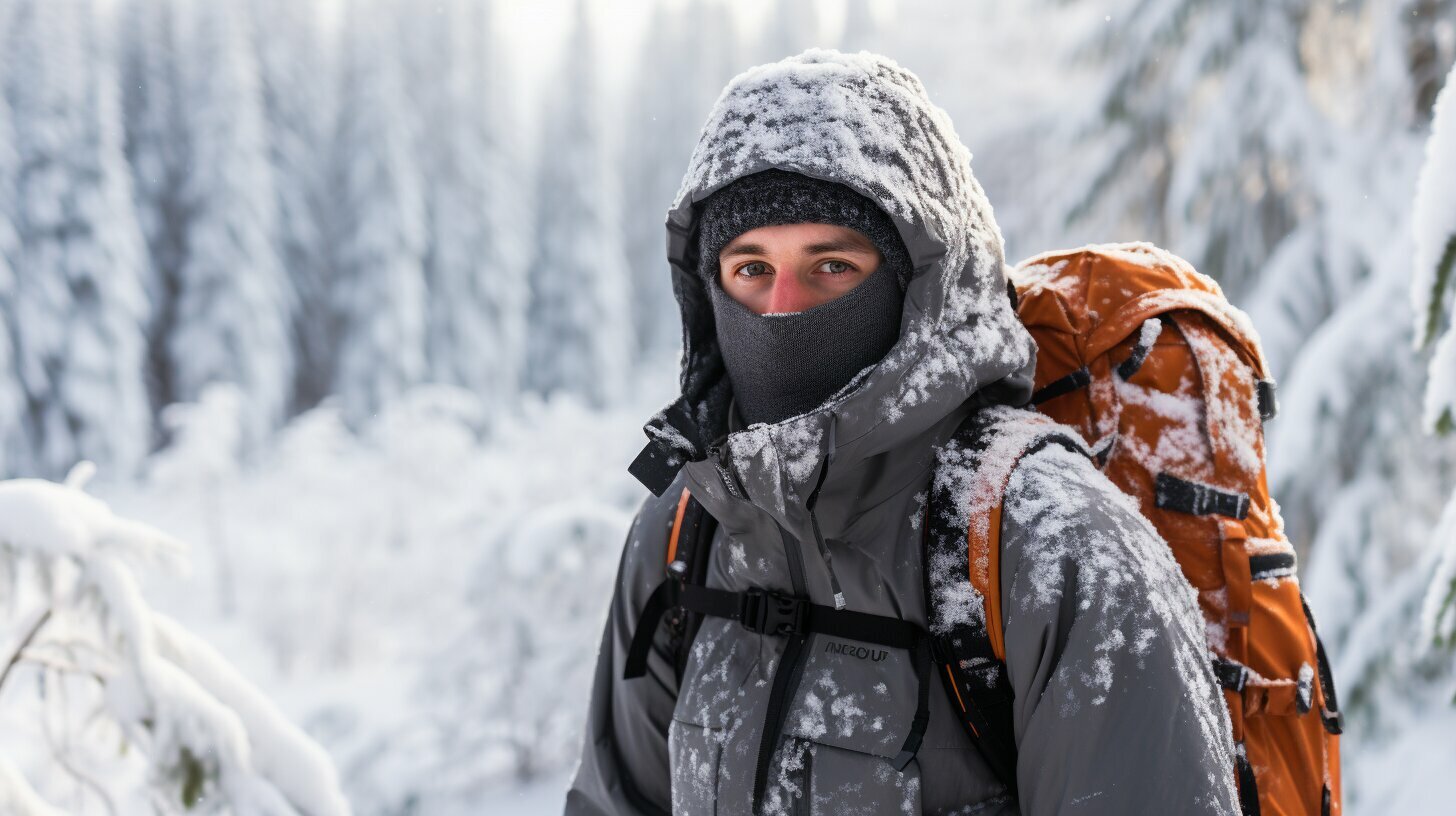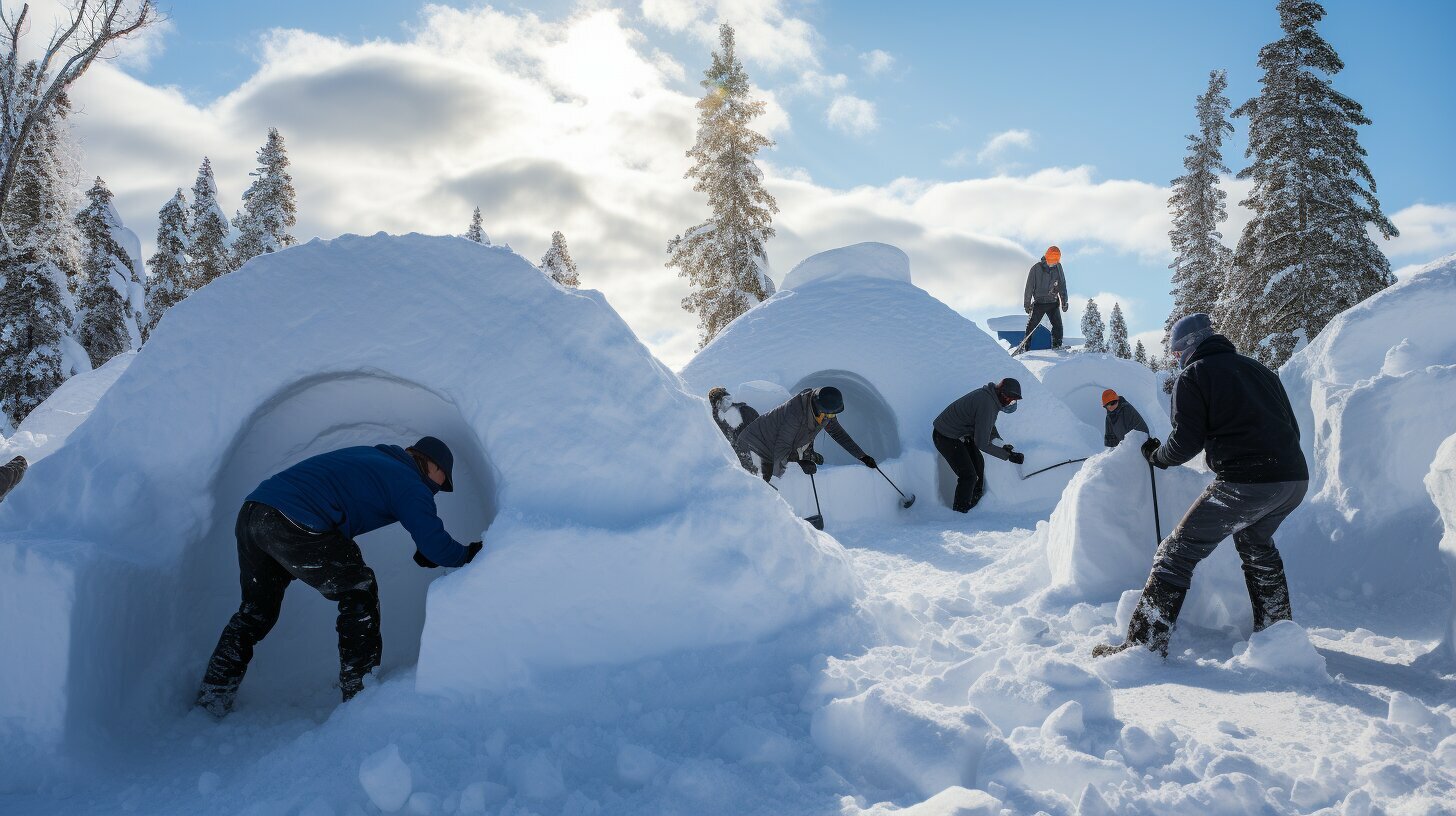Winter is undeniably beautiful, but it can also be harsh and unforgiving. When temperatures drop to extreme lows, it’s crucial to dress appropriately to protect yourself from the dangers of hypothermia, frostbite, and other cold-related illnesses. In this guide, you’ll learn how to dress for extreme cold weather, ensuring that you stay warm and comfortable no matter what the winter throws your way.
Key Takeaways
- It’s important to dress appropriately for extreme cold weather to avoid hypothermia, frostbite, and other cold-related illnesses.
- Layering is essential when dressing for extreme cold, as it provides insulation and allows you to adjust your clothing based on your activity level.
- The right fabrics, such as wool, fleece, and down, can make all the difference in keeping you warm and comfortable.
Understanding the Importance of Layering
When it comes to dressing for extreme cold weather, layering is key. Layering your clothing allows you to trap heat between multiple layers, keeping you warmer than a single bulky layer can. It also gives you the flexibility to adjust your temperature as needed by adding or removing layers.
Start with a base layer made of moisture-wicking material, such as wool or synthetic blends, to keep sweat away from your skin. Add an insulating layer, such as fleece or down, to trap heat and provide extra warmth. Finish with an outer layer, such as a waterproof and wind-resistant jacket, to keep you protected from the elements.
Disclosure: When you buy through links on our site, we may earn an affiliate commission.
When layering, it’s important to avoid tight-fitting clothing that restricts movement or airflow. Instead, opt for loose-fitting layers that allow for movement and air to circulate. Be sure to also pay attention to your extremities, adding layers like gloves, hats, and scarves to protect your hands, head, and neck.
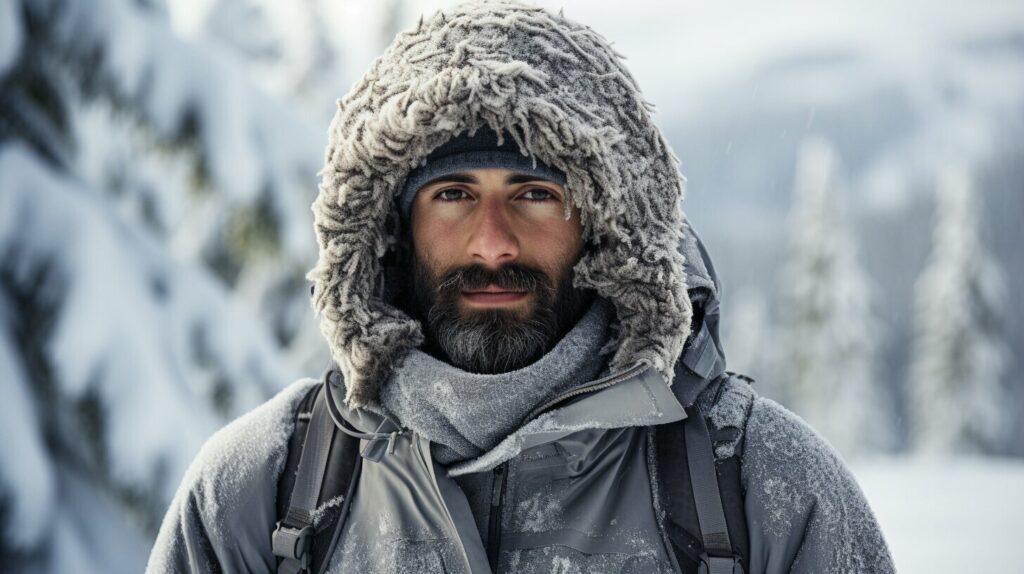
Layering can be a bit daunting, but once you get the hang of it, it’s easy to do and will transform the way you stay warm in extreme cold. Follow these tips and you’ll be prepared to face even the coldest of temperatures.
Choosing the Right Fabrics
When it comes to dressing for extreme cold weather, choosing the right fabrics is crucial for staying warm and comfortable. The best fabrics for cold weather clothing are wool, fleece, and down.
Wool: Wool is a popular choice for cold weather clothing because it is warm, durable, and moisture-wicking. It is also naturally breathable, which helps regulate body temperature and prevent overheating.
Fleece: Fleece is a synthetic fabric that is lightweight, breathable, and quick-drying. It is an excellent choice for layering because it provides insulation without adding bulk.
Down: Down is a natural insulator that is lightweight and compressible, making it ideal for packing in a suitcase or backpack. It is made from the soft undercoating of waterfowl and provides excellent insulation in cold, dry weather.
When choosing cold weather clothing, look for items made from these fabrics to ensure maximum warmth and comfort.

It’s also important to consider the weight and thickness of the fabric. Thicker fabrics offer more insulation but can be bulkier and less comfortable to wear. Lightweight fabrics are less bulky but may not provide as much warmth. Consider the temperature and activity level when choosing fabrics and layer accordingly.
Dressing for the Upper Body
When it comes to staying warm in extreme cold weather, dressing your upper body is crucial. The right winter coat is essential, and layering with sweaters and thermal tops can provide added insulation.
Invest in a quality winter coat made from materials like down, wool, or synthetic fibers. Look for a coat with a high collar and insulated hood for added protection against the cold. A longer coat will also cover more of your body and provide better warmth.
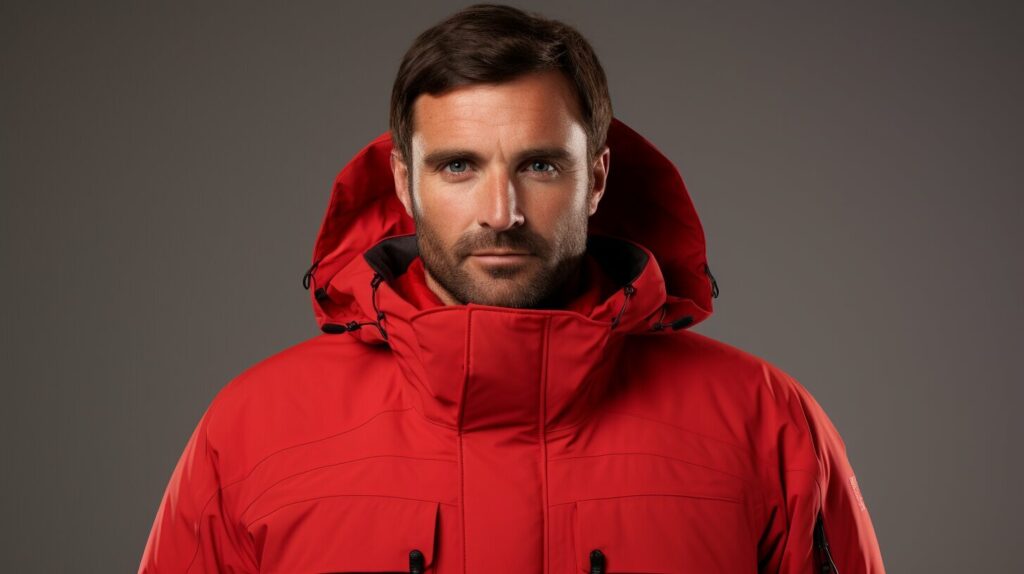
Layering with sweaters, fleece jackets, or thermal tops can provide added insulation. Be sure to choose materials that are moisture-wicking to prevent sweat from accumulating and making you cold.
Accessories like scarves and hats can also provide added warmth to your upper body. A scarf will keep your neck warm, while a hat will prevent heat from escaping through your head.
Dressing for the Lower Body
When it comes to extreme cold weather, it’s essential to protect your lower body from the elements. Start with a base layer of thermal leggings or long johns to keep your legs warm and dry. Pro tip: Look for leggings made from moisture-wicking fabric to keep sweat away from your skin and prevent chills.
Next, add an insulating layer with fleece-lined pants or thick wool trousers. Make sure they fit comfortably over your base layer and allow for easy movement. Avoid tight-fitting clothing that can restrict blood flow and cause cold spots.
For extra protection from snow and slush, invest in a pair of waterproof pants or snow pants. Look for options with adjustable waistbands and ankle cuffs for a secure, comfortable fit. Pro tip: Opt for pants with reinforced knees and seat for added durability.
| Type of Clothing | Recommended Materials |
|---|---|
| Base Layer | Merino wool, synthetic blends, silk |
| Insulating Layer | Wool, fleece, down, synthetic insulation |
| Outer Layer | Waterproof and breathable fabrics such as Gore-Tex, eVent, and DryVent |
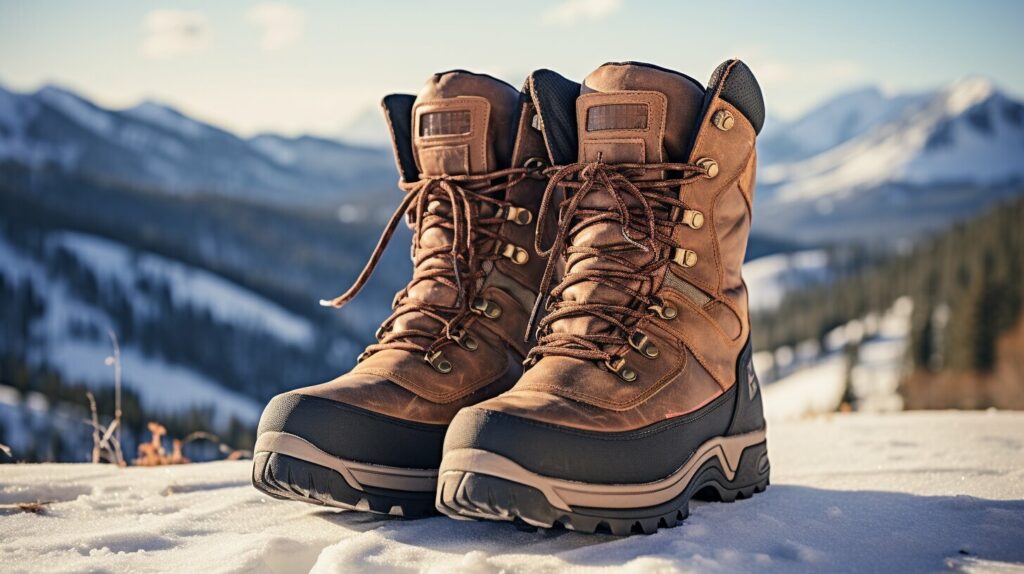
When it comes to footwear, prioritize warmth and traction. Look for insulated boots with thick, non-slip soles and sturdy ankle support. Make sure they fit well and don’t pinch your toes or heels.
To prevent heat loss through your head and neck, add a cozy hat and scarf to your cold weather outfit. Look for wool or fleece options that cover your ears and neck. Consider investing in a balaclava or face mask for extra protection in extremely cold conditions.
Don’t forget about your hands! Wear insulated gloves or mittens to keep your fingers toasty. Look for options with grippy palms for added traction. If your hands tend to get particularly cold, consider adding hand warmers to your gloves for extra heat.
Protecting Your Extremities
When dressing for extreme cold weather, it’s important not to forget about your extremities. Your hands, feet, and head are particularly vulnerable to the cold, and without proper protection, you risk frostbite and other cold-related injuries.
One essential item to have is a good pair of gloves or mittens. Look for gloves that are insulated and waterproof, with a snug fit to prevent cold air from seeping in. Mittens are a great choice for extreme cold, as they keep your fingers together, maximizing warmth. Pro tip: bring an extra pair of gloves in case one gets wet or damaged.
Your feet also need protection from the cold. Choose winter boots that are insulated and waterproof, with a thick sole for added warmth and traction. Wool or synthetic socks are best for extreme cold, as they wick away moisture and provide added insulation. Consider investing in toe and foot warmers for added warmth on particularly cold days.
Don’t forget about your head! A warm hat is essential for keeping in body heat and protecting your ears from the cold. Look for a hat made from wool or fleece, with ear flaps for added protection. Scarves are also great for protecting your neck and face from cold winds. Pro tip: invest in a balaclava for added face and neck protection on particularly cold days.

Additional Tips for Extreme Cold Weather Dressing
When dressing for extreme cold weather, every little bit helps. Here are some additional tips to keep you warm and comfortable through even the coldest of winter days:
- Invest in thermal underwear: Thermal underwear is an excellent way to add an extra layer of warmth to your outfit. Look for underwear made from materials like wool, polyester, or other synthetic fibers that will wick moisture away from your body and keep you dry and warm.
- Use hand and foot warmers: Hand and foot warmers are small packets that can be activated to provide heat for several hours. These are especially useful if you are spending a lot of time outdoors or in a cold environment.
- Utilize heat-retaining accessories: Accessories like neck warmers, balaclavas, and ear muffs can help keep you warm by preventing heat loss from your head and neck.
- Stay dry: Moisture can quickly make you feel much colder than the actual temperature, so it’s essential to stay dry. Waterproof outerwear and boots can help keep you dry, as can waterproof overshoes or galoshes for your shoes.
- Avoid frostbite: Frostbite is a real danger in extreme cold weather. Protect your skin from exposure by wearing gloves or mittens, warm socks, and insulated footwear.
By following these additional tips, you’ll be well on your way to staying warm and comfortable in even the coldest of temperatures. Remember, dressing for extreme cold doesn’t mean sacrificing style; there are plenty of stylish winter fashion essentials that will keep you both warm and chic.
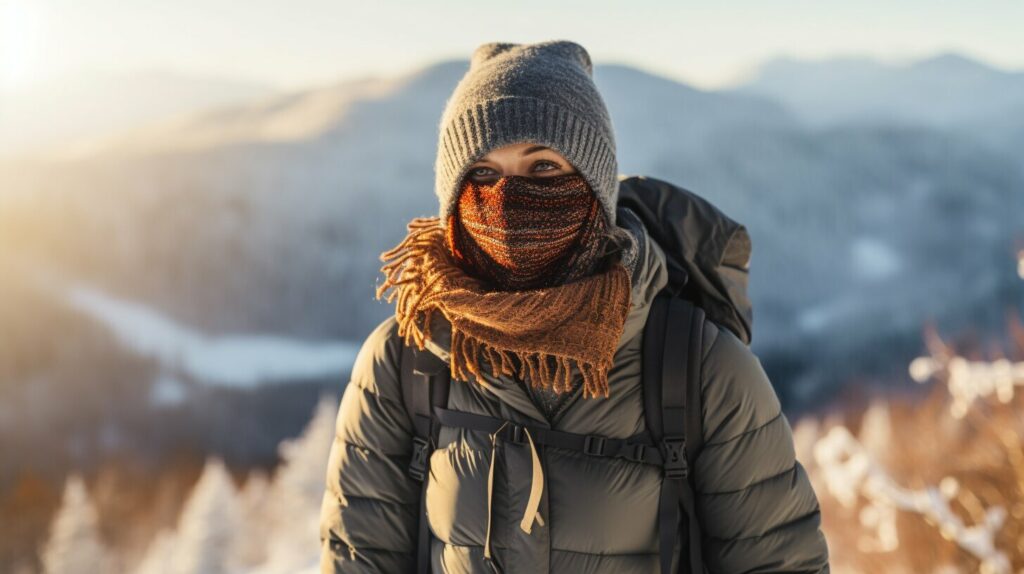
Conclusion
You now know how to dress for extreme cold weather! Remember, the key to staying warm and comfortable in frigid temperatures is to layer your clothing, choose the right fabrics, and protect your extremities. By following these tips and incorporating winter fashion essentials into your outfit, you can embrace the cold weather while staying cozy and stylish.
Don’t forget to invest in thermal underwear, insulated footwear, and hand and foot warmers for added warmth. And always make sure to stay dry and avoid frostbite by wearing waterproof clothing and limiting your time outside in extreme cold.
Now that you have the knowledge to dress appropriately for extreme cold weather, go out there and enjoy all the winter activities that you love! Whether it’s skiing, ice skating, or simply taking a walk in the snow, you’re fully equipped to stay warm and comfortable in any frigid condition.
FAQ
Q: How can I stay warm in extreme cold weather?
A: Layering your clothing and choosing the right fabrics are key. Make sure to dress your upper and lower body appropriately, protect your extremities, and utilize additional tips such as thermal underwear and hand warmers.
Q: What fabrics are best for cold weather clothing?
A: Wool, fleece, and down are great options for keeping warm in extreme cold. Wool provides insulation, fleece is lightweight and breathable, and down is incredibly warm and lightweight.
Q: How should I dress my upper body for extreme cold?
A: Choose a winter coat that is insulated and windproof, layer with sweaters or thermal tops, and don’t forget to wear a scarf and hat for added protection.
Q: What should I wear on my lower body in extreme cold?
A: Insulated pants or thermal leggings are a good choice, and make sure to wear waterproof boots to keep your feet dry. Layering is also helpful, so consider wearing thermal socks or leg warmers.
Q: How can I protect my extremities in freezing weather?
A: Wear gloves or mittens to keep your hands warm, and opt for warm socks and insulated footwear for your feet. Don’t forget to cover your head with a warm hat.
Q: Are there any additional tips for extreme cold weather dressing?
A: Yes, investing in thermal underwear can provide extra warmth, and using hand and foot warmers can keep you comfortable. Remember to stay dry and avoid prolonged exposure to cold to prevent frostbite.



